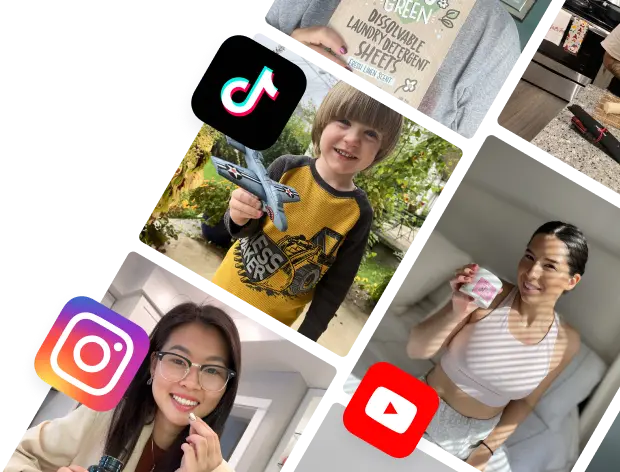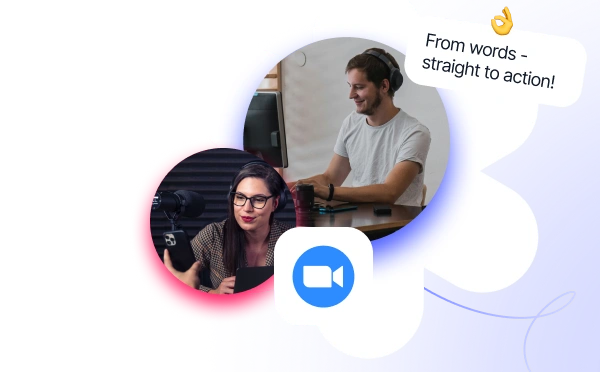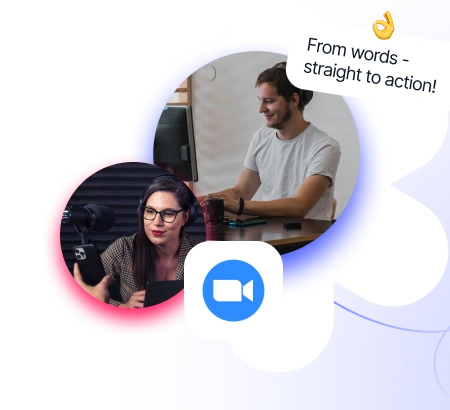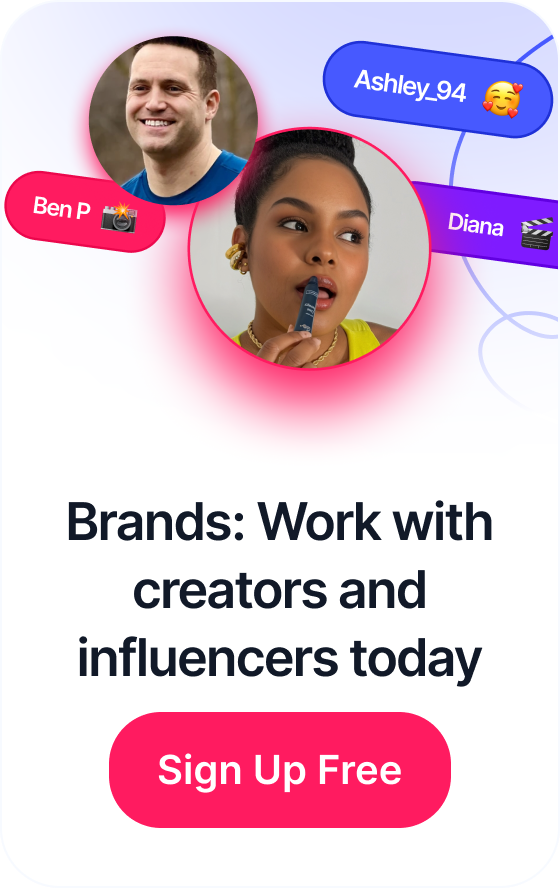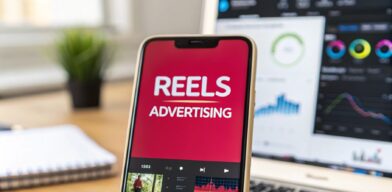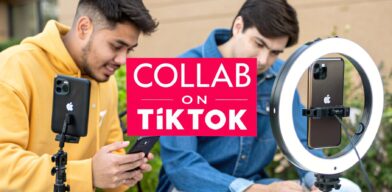 Mastering Social Media Campaign Reporting
Mastering Social Media Campaign Reporting
Trying to create viral content without understanding basic human psychology is like flying blind. It's not about getting lucky or catching some random trend at the right second. It's about intentionally tapping into the core emotions and social triggers that make people need to share something.
The secret sauce isn't just in what you create. The real magic is in figuring out why someone would feel an irresistible urge to hit that share button.
Table of Contents
Understanding the Psychology of Viral Content
Let's get one thing straight: virality is engineered. It’s a deliberate process built on a framework of predictable human behavior, not just wishful thinking. The content that truly explodes online almost always pushes a few specific psychological buttons.
And it has to, because the competition is fierce. The global digital content creation market is on track to hit $34.5 billion by 2025, and people are already spending more than 14 billion hours a day on social media. In that chaotic environment, the only way to cut through the noise is to build your content around how people think and feel.
Tapping into High-Arousal Emotions
Some emotions are just more shareable than others. Content that sparks a strong, almost physical reaction—what psychologists call high-arousal emotions—is wired to go viral. And it's not always about sunshine and rainbows; negative feelings can be just as powerful.
- Awe and Wonder: Think of those breathtaking nature videos or mind-blowing science facts that make you feel like a tiny part of something huge.
- Humor and Laughter: This one's a no-brainer. If you can make someone laugh out loud, they’ll want to pass that good feeling along.
- Anger and Frustration: Content that taps into a shared frustration or shines a light on an injustice can spread like wildfire as people unite around a common cause.
- Surprise and Intrigue: An unexpected twist or a shocking statistic makes people want to share just to see their friends' reactions.
The key here is intensity. Lukewarm, middle-of-the-road content gets ignored. You need to aim for a powerful reaction, whether it's a deep belly laugh or a genuine "wow" moment.
The Power of Social Currency
At the end of the day, sharing is a social performance. We share things that make us look good, smart, or in-the-know to our friends and followers. This is the whole idea behind social currency.
When someone shares your content, they're not just sharing a video or an article; they're making a statement about themselves. They're saying, "This reflects my intelligence, my humor, or my values." A smart user-generated content strategy is built on this principle, encouraging people to post content that elevates their own social status.
Give your audience something insightful, hilarious, or exclusive, and you’re handing them a tool to buff their social image. Suddenly, that share button becomes impossible to resist.
Mastering Short-Form Video For Maximum Impact

Let's be clear: short-form video isn't just a trend anymore. It's the native language of platforms like TikTok, Instagram Reels, and YouTube Shorts, and it's completely rewired how people consume content. If you want to go viral, snappy, engaging video is non-negotiable.
The numbers back this up. Short-form videos pull in 2.5 times more engagement than their long-form counterparts. Looking ahead to 2025, a massive 73% of consumers say they prefer short videos for learning about products. On top of that, 47% of marketers are betting on this format as the most likely to go viral.
This means you need to wear multiple hats—filmmaker, editor, and storyteller—all while packing a punch into 60 seconds or less.
The Critical First Three Seconds
You have a tiny, almost nonexistent window to grab someone's attention before they swipe away. The first three seconds aren't just important; they're everything. Your job is to create a hook so strong it physically stops the scroll.
A great hook usually does one of these three things:
- Ask a provocative question: Think, "What if I told you everything you know about coffee is wrong?"
- Present a visual mystery: Start with a bizarre or fascinating shot that makes the viewer need to know what's going on.
- Promise a valuable outcome: Something direct like, "Here's the one productivity hack that saved me 10 hours this week."
This initial moment sets the entire tone and makes a promise to the viewer, giving them a reason to stick around for the payoff. A weak hook means even the most brilliant content goes completely unseen.
Key Takeaway: Think of your video’s intro like a movie trailer. It needs to be fast, intriguing, and clearly show the value of watching the full clip without giving the whole story away.
Crafting A Narrative Arc
Even a 15-second clip needs a story. A simple beginning, middle, and end can turn a random video into something people feel compelled to share. Your hook is the beginning, the middle is where you deliver on your promise, and the end should offer a satisfying conclusion or a clear call to action.
A classic structure is the "Problem-Solution" arc. Start by touching on a common pain point your audience feels. Spend the middle of the video demonstrating your unique or clever solution. Then, cap it off with the satisfying result. This formula works so well because it's instantly relatable and delivers immediate value. You can see this framework in action by looking at YouTube Shorts best practices, which often rely on quick, effective storytelling.
Another powerful technique is the "Expectation vs. Reality" twist. Set up a scene where the viewer anticipates a certain outcome, then hit them with a surprise. This kind of subversion often leads to humor or shock—two emotions that get shared like crazy.
To truly understand what makes these videos tick, it helps to break down their core components.
Elements of a High-Performing Short-Form Video
| Element | Why It Matters | Actionable Tip |
|---|---|---|
| The Hook (First 3 Secs) | Captures attention immediately. It's your one shot to stop the endless scroll. | Start with a bold claim, a weird visual, or a direct question to the viewer. |
| Pacing & Quick Cuts | Maintains viewer engagement and creates a sense of energy. Slow videos get skipped. | Use jump cuts, quick transitions, and avoid lingering on any single shot for more than 2-3 seconds. |
| Trending Audio | Taps into existing conversations and boosts discoverability through the algorithm. | Find a trending sound that fits your niche. Don't just copy the trend; adapt it to your unique message. |
| On-Screen Text/Captions | Makes content accessible (85% of videos are watched on mute) and reinforces key points. | Use large, easy-to-read text to highlight your main message. Animate it to pop on screen. |
| Clear Value Proposition | Viewers need to know what they're getting—entertainment, education, or inspiration. | Make the "why" of your video obvious from the start. "3 tips for X" or "Watch this hilarious fail." |
| Satisfying Loop | A video that loops seamlessly encourages repeat views, which signals high engagement to the algorithm. | Edit the end of your video to flow perfectly back into the beginning. This is a pro-move. |
| Strong Call-to-Action | Tells the viewer what to do next, whether it's following, commenting, or visiting a link. | End with a clear, simple instruction like, "Follow for more" or "Comment your thoughts below." |
By consciously including these elements, you're not just making a video; you're engineering a piece of content designed for virality.
Using Audio And Trends Strategically
Trending audio is your fast pass to relevance. When you use a sound that's already popular, you're plugging your content into an ongoing conversation. The platform's algorithm is already favoring that audio, giving your video an instant discovery boost.
But here’s the catch: you have to use it authentically. Don't just lip-sync to a random sound because it's climbing the charts. The real magic happens when you connect a trend to your niche in a clever, original way. The most successful creators adapt a trend to fit their brand, not the other way around.
If you have a video that's starting to gain traction and you want to pour some fuel on the fire, you might explore advanced TikTok advertising strategies. A small, targeted ad spend can give a promising video the initial push it needs to catch the algorithm's attention and spread organically.
Ultimately, your goal is to join the conversation without losing your unique voice.
Partner with Creators for an Authentic Connection

Sometimes, the best way to get your message out there isn't to shout it from the rooftops yourself. It's to have someone people already trust share it for you. That’s the magic behind creator partnerships—you’re tapping into the genuine connection a creator has already built with their community.
This isn't some niche tactic anymore; it's a core part of modern marketing. Investment in the creator economy has shot up by 143% since 2021, with big brands now spending an average of $1.7 million a year on these collaborations. The reason is simple: it works. Influencer marketing pulls in an average ROI of $5.78 for every $1 spent, which is nearly double what you'd expect from standard digital ads.
Look Beyond Follower Counts to Find Real Influence
The biggest mistake you can make is getting star-struck by big numbers. A creator with a million followers might look like a sure thing, but if their audience doesn't care or isn't the right fit for your brand, your campaign will go nowhere. The real goal is to find creators whose followers actually listen.
So, forget vanity metrics and look for signs of a healthy, engaged community:
- Real Engagement: Go beyond likes. Look for creators whose posts spark thoughtful comments and genuine conversations. That's a sign people are actually paying attention.
- Audience Fit: Who are their followers? Do their interests, values, and even their sense of humor line up with your ideal customer? You need that alignment.
- An Authentic Voice: Does the creator have a real personality? Their content should feel like them, not a revolving door of generic ads.
This often leads you to micro-influencers, those creators with audiences typically between 10,000 and 100,000. Their communities might be smaller, but they are often incredibly tight-knit and loyal. A recommendation from them feels less like a celebrity endorsement and more like getting a tip from a trusted friend. For a deeper dive, there are great guides that break down how to collaborate with influencers effectively.
Pro Tip: Don't just scroll through their main feed. Watch their Stories, read their replies to comments, and see how they actually talk to their community. That’s where you’ll find the real story of their influence.
Build Collaborations That Don't Feel Like Ads
Once you've found a few promising creators, it's time to build a partnership that works for everyone. The absolute worst thing you can do is hand them a rigid script and expect it to resonate. That approach kills the very authenticity you wanted in the first place.
A great collaboration gives the creator the freedom to weave your message into their own unique style. It should feel like a natural part of their content, not an awkward commercial break.
Here are a few ways to structure a win-win partnership:
- Creative Briefs, Not Scripts: Give them a clear brief that covers your campaign goals, key messages, and any necessary disclosures. Then, let them do what they do best. Trust that they know how to talk to their audience.
- Product Gifting: Sometimes, the simplest approach is the most powerful. Send your product to creators you genuinely admire, no strings attached. If they truly love it, the organic content that comes from it can be pure gold.
- Co-Creation Campaigns: Bring the creator into the brainstorming process right from the start. When they have a hand in shaping the idea, they'll be far more excited to share the final result, turning it into a true collaboration.
Imagine a skincare brand partnering with a beauty creator. Instead of a single, forgettable ad, they could work together on a 30-day "real results" series. The creator documents their honest experience, building a compelling story that earns trust over time. They have the freedom to share what they really think, making their final stamp of approval incredibly powerful and shareable.
Embedding Share Triggers into Your Content

Truly viral content is almost never an accident. It's engineered for distribution right from the get-go. Instead of just creating something cool and then asking people to share it, the real pros build "share triggers" directly into the content's DNA.
When you get this right, sharing feels like the natural, almost involuntary, next step for the viewer.
The trick is to create content formats that are inherently social. They might solve a nagging problem, reveal something personal about the user, or simplify a complex idea so brilliantly that sharing it feels like a public service. It’s all about making your audience look good on their own feeds by giving them something genuinely valuable to pass along.
Create Interactive Quizzes People Can't Resist Sharing
Quizzes are an absolute masterclass in shareable content. Why? Because they tap directly into our sense of identity and our desire to broadcast it. A well-designed quiz gives people a personalized result they feel compelled to share because it says something unique about who they are.
Think about those classic BuzzFeed quizzes like, "What City Should You Actually Live In?" The result isn't just a location; it's a personality badge. People plaster it on their profiles with captions like, "I got Paris! Totally me," because it reinforces their self-image as worldly and sophisticated.
To make a quiz impossible not to share:
- Focus on Identity: Make sure the results are positive, aspirational, and flattering.
- Keep It Simple: Aim for 7-10 questions. Any longer, and you'll see a massive drop-off rate.
- Make Results Sharable: Design custom, visually stunning graphics for each outcome, perfectly formatted for social feeds.
The key is that the share is all about the user, not your brand. Your brand just provides the stage for their self-expression.
Design Infographics That Make Complex Ideas Simple
We're all drowning in data. In a world of information overload, clarity is king. Infographics that take a complicated topic and make it instantly digestible are incredibly valuable and, as a result, highly shareable.
People share them to look smart and to be helpful. An infographic that visually breaks down something like "The True Scale of Our Solar System" can communicate an idea far more powerfully than a dense, text-heavy article ever could.
An infographic's power comes from its ability to turn information overload into an "aha!" moment. When you give someone that moment of clarity, they will want to share it with others to pass on the same feeling.
When you're designing an infographic, stick to a single, compelling story. Use a clean layout, a limited color palette, and bold typography to guide the viewer's eye. This focus on clear communication is a core principle in creating social media content that actually cuts through the noise.
Turn Your Audience into Your Best Marketers with UGC
User-generated content (UGC) campaigns are the ultimate share trigger because they put your audience at the center of the story. By inviting people to create content around a branded theme or hashtag, you transform passive consumers into active, passionate brand advocates.
A classic example is a campaign where a brand encourages its customers to share photos using their product in a creative way, with the best ones getting featured on the official page. This works on multiple levels:
- It offers social currency: Being featured by a brand is a form of validation and gives the user exposure.
- It builds community: Participants feel like they are part of a larger movement connected by a shared interest.
- It provides authentic social proof: This content feels far more genuine and trustworthy than a polished ad from the brand itself.
To run a successful UGC campaign, you need a dead-simple call to action and a compelling reason for people to join in. The incentive doesn't always have to be a huge prize—often, just the chance for recognition is more than enough to spark widespread participation and sharing.
Getting Your Content Seen: How to Engineer a Viral Lift-Off
Look, creating a masterpiece is only half the battle. I've seen way too many creators pour their heart and soul into a piece of content, hit "publish," and then just… wait. That's not a strategy. The real work, the part that separates the one-hit wonders from the consistently viral creators, begins the moment your content goes live.
This is where you shift from creator to promoter. Your goal is to turn that amazing thing you just made into something that actually catches fire and spreads on its own.
The first few hours after you post are everything. You're in a sprint to get a burst of early engagement—likes, comments, shares, saves. These are the signals that tell a platform's algorithm, "Hey, people really like this." This initial traction is what convinces the algorithm to push your post out to a much, much wider audience beyond your followers. It's the spark that can ignite the whole thing.
This breakdown shows just how much timing and post frequency can influence that critical first push.

As you can see, both when you post and how often you post play a huge role in your content's initial reach. Getting this right sets the stage for everything that follows.
Seeding Your Content for That First Push
The "post and pray" method is a recipe for failure. To kickstart the viral process, you have to be proactive and seed your content in the right places. Think of it like finding the perfect kindling to start a campfire. You need to give it a nudge in communities that are already fired up about your topic.
If you made a video about a niche hobby like custom mechanical keyboards, don't just post it on your feed. Share it in the relevant subreddits or Facebook Groups where keyboard enthusiasts hang out. Quick tip: don't just drop a link and run. Nobody likes a spammer. Engage with the community first, become a familiar face, and then share your content as something genuinely valuable.
Your first ten fans are more important than your next thousand. Focus on getting your content in front of a small, hyper-engaged group that will champion it. Their early, authentic engagement is the most powerful signal you can send to any algorithm.
Master the Platform's Built-In Tools
Every social media platform gives you a toolkit designed to boost your discoverability, but most creators barely scratch the surface. If you want to maximize your organic reach without spending a dime, you need to master these native features.
Here are a few must-dos that a lot of people overlook:
- Hashtags: Don't just slap on the most popular ones. Use a smart mix: a few broad, trending hashtags to catch big waves, and several smaller, niche-specific ones to attract your perfect audience.
- Location Tags: This is so simple but so effective. Tagging a relevant city, a specific coffee shop, or a landmark can expose your content to anyone searching for or interacting with that location. It’s free exposure.
- Collaborator Posts: On Instagram, the "Invite Collaborator" feature is a game-changer. It puts your post on your partner’s feed and your own, instantly doubling its initial reach.
These aren't just decorative add-ons; they are direct pipelines to new audiences who are ready to engage.
Where you share and how you share it matters. A tactic that kills it on TikTok might fall completely flat on LinkedIn. You have to tailor your distribution strategy to fit the platform's algorithm and user expectations.
Here's a quick look at how you should be thinking about distributing your content across the major players.
Platform-Specific Distribution Tactics
| Platform | Primary Tactic | Best Practice Example |
|---|---|---|
| TikTok | Sound & Trend Piggybacking | Find a trending audio clip that's just starting to take off (under 5,000 uses). Create a video that puts your unique spin on the trend, making it feel fresh but familiar. |
| Reels + Collaborations | Partner with another creator in your niche. Create a Reel that provides value to both audiences and use the "Invite Collaborator" feature to post it on both profiles simultaneously. | |
| X (Twitter) | Thread & Quote-Tweet | Turn your long-form content into a punchy 5-7 tweet thread with a strong hook. Ask a larger account in your space to quote-tweet it with their thoughts to tap into their audience. |
| Text-Only Posts + Comments | Share a personal story or a controversial-but-defensible take related to your industry in a text-only post (no links). Spend the first hour replying to every comment to fuel engagement. | |
| Group Seeding | Identify 3-5 highly active and well-moderated Facebook Groups in your niche. Share your content with a personalized intro that sparks discussion, not just a link drop. | |
| Subreddit Engagement | Find the most relevant subreddit and become an active member for a week before you post. Then, share your content with a title that speaks the subreddit's language. |
Each platform has its own rhythm. The key is to learn it and play along. Trying to force a LinkedIn strategy onto TikTok is like trying to fit a square peg in a round hole—it just won't work.
Winning the First 60 Minutes
The first hour after you post is a frantic race against the algorithm. Your single most important job during this window is to reply to every single comment you get. As soon as they come in.
This simple action does two incredibly powerful things. First, it instantly doubles your comment count, making the post look way more engaging to anyone new who stumbles upon it. Second, it builds an immediate sense of community. People are far more likely to jump into a conversation if they see the original creator is right there in the trenches with them.
That initial flurry of back-and-forth tells the platform that your content isn't just being passively consumed; it's sparking a real conversation. For any algorithm, that's a massive green flag for wider distribution.
Common Questions About Creating Viral Content
Trying to make viral content can feel like you're trying to solve a puzzle where the pieces keep changing shape.Trying to make content go viral can feel like solving a puzzle where the pieces keep changing shape. Even when you have a great strategy, you're bound to have questions. This section cuts through the noise and tackles the most common ones I hear, giving you straightforward answers so you can focus on what actually works.
Let's clear things up and get you on the right track.
How Long Does It Take for Content to Go Viral?
Honestly, there's no magic number. Some posts absolutely explode within hours, while others are more of a slow burn, picking up steam over days or even weeks. It’s a common misconception that virality is always an instant flash flood of attention.
If a piece is going to take off quickly, it usually happens in the first 24 to 48 hours. This is the make-or-break window where a platform's algorithm sees strong early signals—like a flurry of shares, saves, and high watch time—and decides to push your content out to a much wider audience.
But the timeline can be wildly unpredictable. I've seen content sit dormant for weeks, only to blow up when a big creator stumbles upon it or a random news event suddenly makes it incredibly relevant. The real key is to focus on building a consistent content engine, not pinning all your hopes on a single post becoming an overnight sensation.
Can Any Type of Business Create Viral Content?
Absolutely. Virality isn't just for flashy consumer brands or comedy accounts. Any business, no matter how "boring" your industry might seem, can strike gold. The trick is to stop thinking about self-promotion and start thinking about universal human connection.
You have to tap into the emotions, stories, and ideas that resonate with people, not just your direct customer base.
- A B2B software company could make a painfully relatable short video about the agony of back-to-back Zoom meetings.
- A law firm could design a clean, shareable infographic that finally explains a complex legal topic everyone's curious about.
- A manufacturing plant could post a mesmerizing, oddly satisfying video of their production line in action.
The common thread here? They've all stepped away from the sales pitch. When you create something that's genuinely entertaining, educational, or emotionally resonant, your industry doesn't matter anymore. You’re not just a brand; you’re a creator putting valuable content into the world.
What Metrics Should I Track for Viral Potential?
Forget likes and views. Seriously. They’re vanity metrics that look impressive on the surface but don't tell you much about whether your content is actually spreading. To get the real story, you need to look at the metrics that signal active audience endorsement and deep engagement.
These are the numbers that the algorithms really care about:
- Share Rate: This is your north star. Just divide the number of shares by the number of views. A high share rate is the clearest signal you can get that people found your content so good, they were willing to stake their own social reputation on it by sharing it.
- Saves: A save is incredibly powerful. It means your content was so valuable that someone wants to come back to it later. For algorithms, this screams high-quality, evergreen appeal.
- Average Watch Time & Completion Rate: For any video content, these are non-negotiable. If you can hold people's attention, the platform will reward you. It’s their ultimate goal, after all.
- Comment Quality: Don't just count comments; read them. Are people tagging their friends? Starting real conversations? This qualitative feedback is just as crucial as the raw numbers.
Zeroing in on these deeper metrics will give you a much clearer picture of what’s truly connecting and why your content is (or isn’t) taking off.
Is It Possible to Go Viral Without a Big Budget?
Yes, and it happens all the time. Think about it—some of the most iconic viral moments in internet history were born from pure creativity, not a fat production budget. Virality is rooted in the strength of an idea, not the polish of its execution.
A clever, authentic concept filmed on a smartphone can easily crush a slick, high-budget ad that fails to connect with anyone on an emotional level. Your best assets aren't expensive cameras or a fancy studio. They're your creativity and your deep understanding of what makes people tick.
Pour your resources into the things that actually move the needle:
- Brainstorming: Spend real time coming up with unique, relatable, and surprising ideas.
- Audience Research: Go deep. Truly get to know the communities you want to be a part of.
- Storytelling: Master the art of crafting a compelling narrative, even if it’s just a 15-second clip.
Jumping on trending formats, encouraging user-generated content, and collaborating with micro-creators are all powerful, cost-effective ways to get massive organic reach without breaking the bank.
Ready to stop guessing and start connecting with creators who can bring your viral ideas to life? JoinBrands is an all-in-one platform that links you with over 250,000 creators, making it simple to launch campaigns, manage content, and amplify your message authentically. Discover how JoinBrands can transform your creator marketing strategy today!

